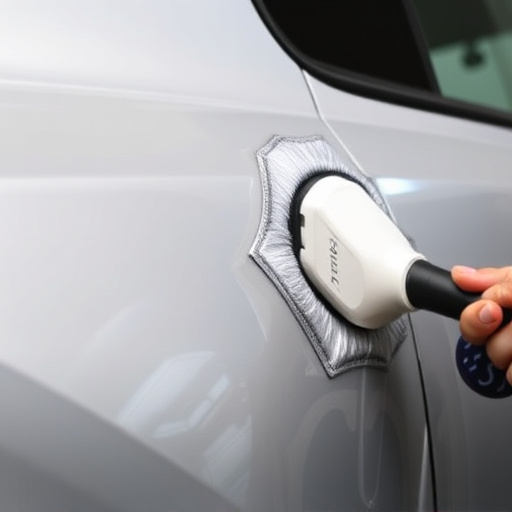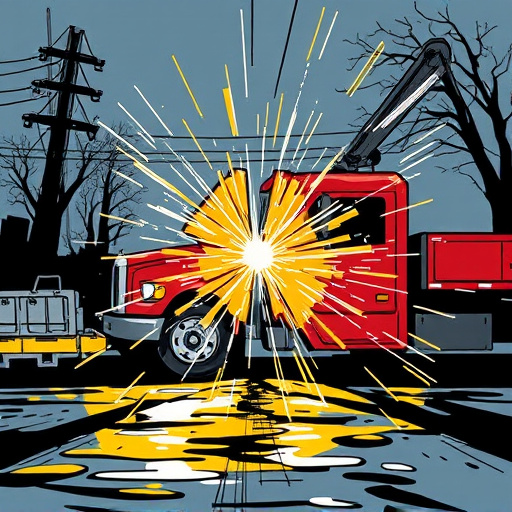Unveiling Customer Safety Assurance: Basic vs Advanced Strategies

Customer Safety Assurance (CSA) programs are vital for fleet repair services to ensure customer sati…….
In today’s complex and interconnected global market, ensuring customer safety has emerged as a paramount concern for businesses and governments alike. ‘Customer Safety Assurance’ (CSA) is a multifaceted concept that encompasses various strategies, policies, and technologies designed to protect consumers from potential harm, whether physical, financial, or psychological. This article aims to provide an in-depth exploration of CSA, its global impact, economic implications, technological innovations, regulatory frameworks, challenges, and future prospects. By delving into these aspects, we will uncover the critical role that CSA plays in fostering trust, enhancing consumer confidence, and driving sustainable business practices.
Customer Safety Assurance refers to the comprehensive processes and measures implemented to safeguard consumers from risks associated with products, services, or interactions with a company. It involves a proactive approach to identify, mitigate, and communicate potential hazards to ensure consumer well-being. The core components of CSA include:
The concept of CSA has evolved over time, reflecting societal changes and increasing consumer awareness. Historically, product safety was primarily governed by regulatory bodies enforcing minimum standards. However, high-profile incidents, such as the 1986 Johnson & Johnson baby powder asbestos controversy and the 2007 Toyota accelerator pedal recall, led to a heightened focus on proactive safety assurance.
Modern CSA goes beyond compliance to emphasize consumer empowerment and trust. It involves designing products and services with safety at the forefront, utilizing data analytics for predictive risk assessment, and fostering open communication channels. This shift has been catalyzed by several factors:
Customer Safety Assurance is a universal concern, yet its implementation varies across regions due to cultural, economic, and regulatory differences. The global impact of CSA can be observed in several key areas:
The execution of CSA varies across regions:
| Region | Notable Features |
|---|---|
| North America | Stricter product safety regulations, emphasis on consumer class-action lawsuits as a driver for change. |
| Europe | Comprehensive data privacy laws, leading to stringent online safety measures and transparent reporting. |
| Asia Pacific | Rapidly growing e-commerce driving the need for secure digital transactions and consumer protection. |
| Middle East & Africa | Increasing focus on healthcare safety standards due to rapid urbanization and aging populations. |
CSA significantly influences market dynamics:
Investor sentiment is closely tied to CSA:
Technological innovations have revolutionized CSA:
Emerging technologies hold significant promise for CSA:
Global efforts to regulate CSA are in flux, with varying degrees of stringency across regions:
Regulatory frameworks exert a powerful influence on:
Despite its importance, CSA faces several challenges:
Addressing these challenges requires collaborative efforts:
Apple has consistently ranked highly in product safety assessments due to its proactive approach. They utilize advanced analytics to predict potential hardware issues and design products for longevity, reducing the need for frequent replacements. Apple also offers detailed safety guidelines and support, ensuring consumers know how to use their devices safely.
IKEA has implemented a comprehensive supply chain transparency program, tracking every product from origin to store. This initiative ensures ethical sourcing, responsible manufacturing, and safe working conditions for all involved. Their ‘People and Planet Positive’ strategy demonstrates a commitment to CSA beyond legal requirements.
Google’s handling of user data reflects a strong focus on privacy and security. They employ robust encryption, offer transparent data usage policies, and empower users with control over their information. These measures not only protect consumers but also build trust in the company’s digital safety practices.
The future of CSA is poised for significant growth:
Several trends will shape the CSA landscape:
To stay ahead in CSA:
Customer Safety Assurance is a dynamic field that continues to evolve with technological advancements, changing consumer behaviors, and global regulatory shifts. As businesses navigate an increasingly complex landscape, CSA will remain a critical differentiator in building consumer trust and ensuring long-term sustainability. By embracing technological innovations, adopting best practices, and prioritizing consumer well-being, companies can not only meet expectations but also drive positive change.
Q: How does customer safety assurance differ from product liability?
A: While both relate to consumer protection, CSA is a proactive approach that involves risk assessment and mitigation strategies, whereas product liability is a legal concept focusing on accountability for harm caused by defective products.
Q: What role does data privacy play in customer safety assurance?
A: Data privacy ensures that consumer information is handled securely and transparently. It’s crucial for building trust and preventing identity theft or unauthorized use of personal data, which are potential risks to consumer safety.
Q: How can small businesses ensure CSA without significant costs?
A: Small businesses can prioritize CSA by implementing basic risk assessment practices, staying informed about relevant regulations, offering clear product safety information, and fostering a culture of continuous improvement.
Q: Can you explain the impact of global harmonization on customer safety assurance?
A: Global harmonization of standards aims to create consistent safety requirements across countries. This simplifies compliance for businesses operating internationally and reduces the risk of exploitation by companies with lower safety standards.
Q: What are some emerging technologies that will revolutionize CSA in the future?
A: Technologies like AI, IoT, and blockchain hold significant potential for enhancing CSA. They enable more efficient risk assessment, real-time monitoring, and transparent supply chain management, respectively, leading to safer products and experiences.

Customer Safety Assurance (CSA) programs are vital for fleet repair services to ensure customer sati…….

Customer Safety Assurance (CSA) is a strategic approach for businesses to prioritize customer well-b…….

Body shops ensure customer safety assurance through meticulous accident vehicle repairs, comprehensi…….

In the digital age, transparency in auto repair services enhances customer safety assurance. Open co…….

Customer Safety Assurance (CSA) standards are crucial for auto repair providers, ensuring vehicle, c…….

Customer safety assurance is paramount for auto body shops, requiring measures beyond legal complian…….

Collision audits are crucial for enhancing customer safety assurance in auto repair shops. They thor…….

Advanced sensors and technologies like LiDAR, radar, and cameras revolutionize customer safety assur…….

Real-time communication tools like instant messaging and push notifications are crucial for customer…….

Transparency in communication builds trust between businesses and customers, especially in vehicle r…….